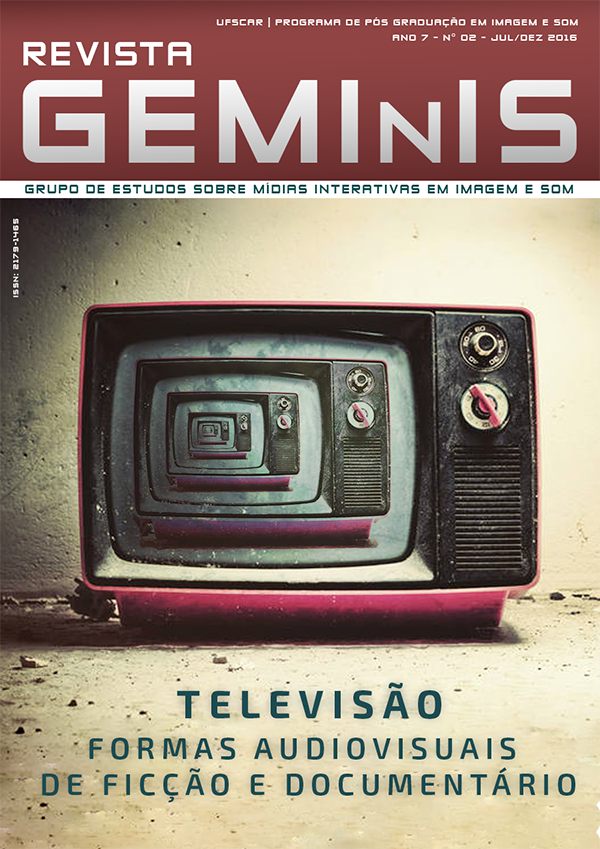STRATEGIES AND CURRENTS OF FLOWS IN HYBRID SPACES: THE WEB AND TV
Keywords:
TV, web, fluxo de convergência, hibridismo, segunda telaAbstract
TVs are expanding their domains from the new digital platforms and looking for alternatives to face this moment of media convergence. Broadcasters with a television tradition go through a phase of adaptation to the new market that opens for audience and production for digital media. Because of this, the GNT and Globo channels have developed participation tools in their websites, Gnt and Gshow, inviting the user to interact through digital social networks. In view of this, we sought to find out what interaction strategies these channels developed in the face of the bilateral convergence flow that this TV and web association promote by further hybridizing the environments.Downloads
References
AUMONT, Jacques. A estética do filme. São Paulo: Papirus, 1995.
BOLTER, Jay David; GRUSIN, Richard. Remediation: understanding new media. Cambridge: MIT Press, 2000.
JENKIS, Henry. Convergence Culture, La Cultura de la Convergência de los Médios de Comunicación. – Barcelona/Buenos Aires/México, Paidós -2009
MCLUHAN, Marshall. Os meios de Comunicação como extensões do homem. São Paulo: Colares, 1995.
LEÃO, Lucia. O Labirinto da Hipermídia. Arquitetura e Navegação no Ciberespaço. Iluminuras: São Paulo, 1999.
LEMOS, André. Ciber-Cultura-Remix. In: Imagem (ir) realidade: comunicação e cibermídia. Porto Alegre Sulina,2006.
LEMOS, Renata; SANTAELLA, Lucia. Redes sociais digitais a cognição conectiva do Twitter. São Paulo: Paulus, 2010.
MACHADO, Arlindo. Fim da Televisão? Revista Famecos. Mídia e Tecnologia. Porto Alegre: PUCRS, janeiro/abril2011.
MARTINO, Luís. Teoria das Mídias Digitais: Linguagens, Ambientes, Redes. Petrópolis: Vozes, 2014.
MURRAY, Janet H. Hamlet no Holodeck. São Paulo: Editora da UNESP, 2001.
PALACIOS, Marcos. Ruptura, Continuidade e Potencialização no Jornalismo Online: o Lugar da Memória. In: MACHADO, Elias; PALACIOS, Marcos (Orgs.). Modelos do Jornalismo Digital. Salvador: Editora Calandra, 2003.
PLAZA, Júlio. Tradução Intersemiótica. São Paulo: Perspectiva, 2001.
RUEDA, María de Los Ángeles (Org.). Arte y Medios. Entre La Cultura de Masas y La Cultura De Redes. La Plata:AL Margen.2014.
SANTAELLA, Lúcia. Matrizes de Linguagem e do Pensamento. São Paulo: Iluminuras, 2001.
SANTAELLA, Lucia. Comunicação ubíqua: repercussões na cultura e na educação. São Paulo: Ed. Paulus, 2013
SET. Sociedade Brasileira de Engenharia de Televisão. Você ainda vai ter uma? Disponível
em: < http://www.set.org.br/artigos/ed133/ed133_pag84.asp>. Acesso em: 17/10/2015, ás 19h30.
SCOLARI, Carlos. Hipermediaciones. Elementos para uma Teoría de La Comunicación Digital Interactiva. Barcelona: Gedisa, 2008.
JOHNSON, Steven. Cultura Da Interface.Rio de Janeiro: Sahar, 2001.
Downloads
Published
How to Cite
Issue
Section
License
Authors who publish in this journal agree to the following terms:
a. Authors retain copyright and grant the journal the right of first publication, with the work simultaneously licensed under a Creative Commons Attribution License that allows sharing of the work with acknowledgment of authorship and initial publication in this journal.
b. Authors are authorized to assume additional contracts separately, for non-exclusive distribution of the version of the work published in this journal (eg, to publish in an institutional repository or as a book chapter), with acknowledgment of authorship and initial publication in this journal.


